
Guest blogged by Preserve Architectural Heritage
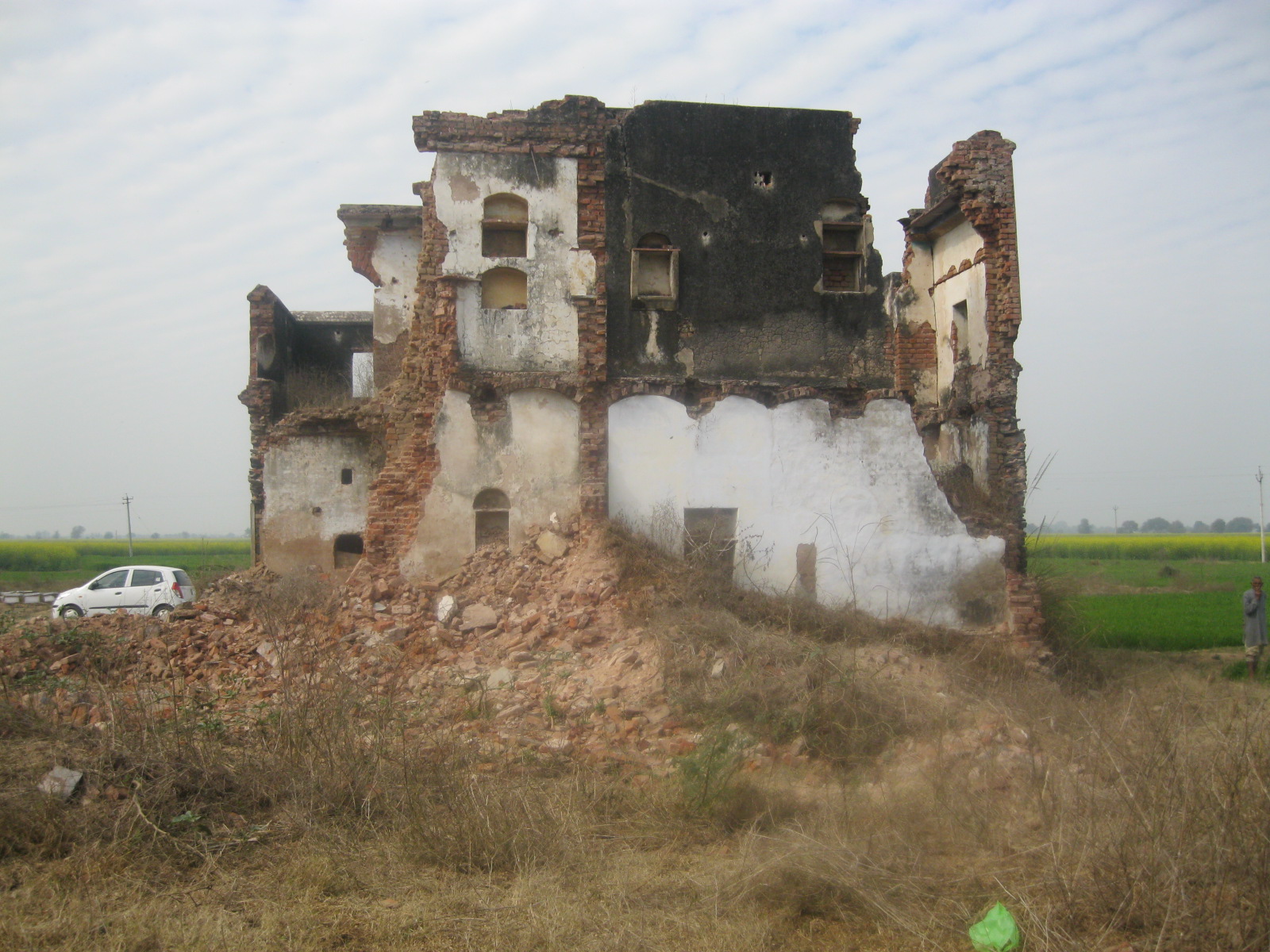 What: discovery of two sites linked to 1984: (1) Hondh Chillar, discovered January 2011. (2) Pataudi, discovered Februrary 2011. Both are in Haryana. Excerpts from Press Releases from Sikhs for Justice reveal that 32 men, women, and children were brutally tortured and killed in Hondh Chillar and 17 in Pataudi.
What: discovery of two sites linked to 1984: (1) Hondh Chillar, discovered January 2011. (2) Pataudi, discovered Februrary 2011. Both are in Haryana. Excerpts from Press Releases from Sikhs for Justice reveal that 32 men, women, and children were brutally tortured and killed in Hondh Chillar and 17 in Pataudi.
Why is this discovery important: So far all the investigation into the violence of 1984 has been done via interviews, eyewitness accounts, judicial commissions, and lawsuits. For the first time, we have living evidence of the genocide: the buildings speak for themselves. Though there are thousands of names on the ever-growing list of those killed in 1984, many of us have very little connection to those names since we don’t personally know the families. Even if some of us know or are related to survivors of the violence, it’s difficult and painful to have those individuals recollect and narrate their memories and experience.
Those of us with no familial connection to Operation Bluestar, those of us who were too young to remember, or were not born when this genocide tookplace now have a physical, tangible, alive, and direct relationship to this significant period of Sikh history through these sites. Since memory of any tragic event is intrinsically linked to physical location[s], it is absolutely crucial that we realize the value of Hondh Chillar and Pataudi as sites that provide us with a direct link to the memory of 1984. They are living sites, open for everyone to access and connect with. They are silent victims, that, just like the human victims of 1984, represent a crucial moment from the recent Sikh past.
On a recent visit to Amritsar, one of the topics of interest was the newly approved plan by Chief Minister Badal for the revamping of the entrance to the Darbar Sahib. The plan includes a “state-of-art” restructuring of the entrance plaza.
According to one article, the new entrance would address accessibility for pedestrians and eco sustainability. It was also noted in this article that a timeline for completion and budget for this project has not been planned.
While the Panjab government is clearly looking to increase their tourism value, it was made clear to me that many Panjabis are not huge supporters of a project that will change the existing architecture around the Darbar Sahib. There is a strong sentiment that religious buildings should be treated as such, rather than as tourist spots.
The Darbar Sahib complex does rely on funds to ensure sustainability but with plans to enhance the Darbar Sahib with tourism in mind, the Panjab government will be treading a fine line to make sure that the holiest of places for Sikhs does not become impacted by visitors. Nevertheless, the Darbar Sahib is not the first place to be affected by increased tourism. Other “wonders” around the world are also working to address how to balance the sustainability of history with the growing inquisition of visitors.
What do you think? Should the Darbar Sahib be redesigned with tourism in mind or should efforts be made to keep the area intact as an important religious place?
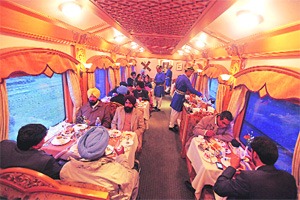 A luxury train, costing about $10,000 per passenger, and traveling to the five takhts throughout India has begun it’s journey. The nine-day trip will begin in New Delhi and will stop at Keshgarh Sahib, the Akal Takht, Damdama Sahib, Hazoor Sahib and Patna Sahib.
A luxury train, costing about $10,000 per passenger, and traveling to the five takhts throughout India has begun it’s journey. The nine-day trip will begin in New Delhi and will stop at Keshgarh Sahib, the Akal Takht, Damdama Sahib, Hazoor Sahib and Patna Sahib.
The 21-coach train includes two presidential suites, five-star rooms, a spa, a salon, gym, two restaurants, a conference hall and a business center! [link] There are currently 88 passengers on board from both India and abroad including the US, Canada, the UK, Germany and France. The trip is being managed by the Taj group of hotels.
It sounds like the trip is not necessarily directed towards Sikhs and is not simply a “pilgrimage” but apparently will include additional stops in Rajasthan for sightseeing. One article notes that,
Different legs of the journey will have performances by traditional artists onboard. “Kirtans” (holy songs of Sikhs) by Sikh hymn singers called Raagis will also be an attraction.
The next trip is planned for March 2011 with an ultimate goal of doing four trips a year. What are your thoughts – would you pay $10,000 for a trip like this?
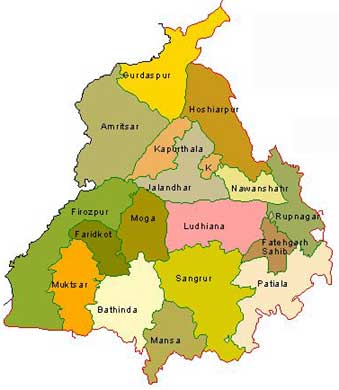 The following video, from the BBC, shows a sad reality of the growing drug problem in Punjab. High unemployment rates have inevitably contributed to this problem. While the video only highlights Punjabi men, it is well known that young Punjabi women are also suffering from this addiction. I can’t embed the video, so please click here to view it.
The following video, from the BBC, shows a sad reality of the growing drug problem in Punjab. High unemployment rates have inevitably contributed to this problem. While the video only highlights Punjabi men, it is well known that young Punjabi women are also suffering from this addiction. I can’t embed the video, so please click here to view it.
There is growing concern in India about the rapid rise in drug addiction cases in Punjab, one of the country’s wealthiest states.
The main university in the region has claimed that 70% of young Punjabi men are hooked on drugs or alcohol.
The problem is at its worst along the border with Pakistan where heroin originating from Afghanistan is smuggled into the country.
The BBC’s Mark Dummett reports from Amritsar.
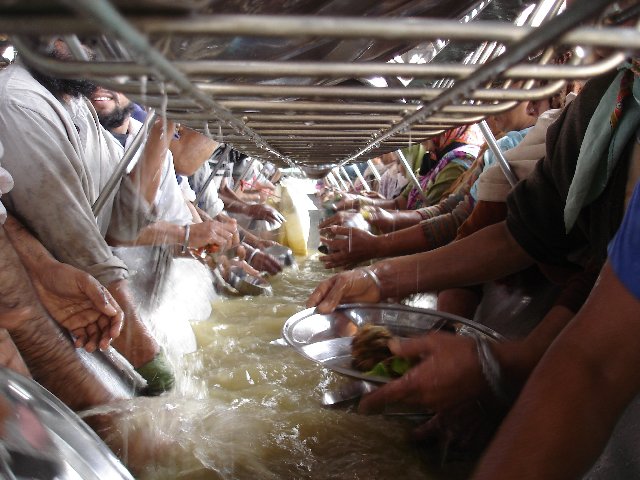 Anyone who has been blessed enough to visit the Darbar Sahib in Panjab will always speak about the amazing experience of Langar that takes place there. A free meal is provided to about 80,000 people each and every day. For those who have not visited the “Golden Temple” or perhaps are not familiar with this unique aspect of Sikhi, this NYTimes article provides a great overview of how souls are nourished in this small complex in Amritsar. The video below is titled, Peace and Roti at the Golden Temple and highlights how langar brings people of all faiths and backgrounds together as equals.
Anyone who has been blessed enough to visit the Darbar Sahib in Panjab will always speak about the amazing experience of Langar that takes place there. A free meal is provided to about 80,000 people each and every day. For those who have not visited the “Golden Temple” or perhaps are not familiar with this unique aspect of Sikhi, this NYTimes article provides a great overview of how souls are nourished in this small complex in Amritsar. The video below is titled, Peace and Roti at the Golden Temple and highlights how langar brings people of all faiths and backgrounds together as equals.
You can view the VIDEO here.
You can view the PHOTO GALLERY here.
Guest Blogged by Amritpan

Earlier this week I received an email letter from Kashmir. This was not the first such letter from Kashmir, nor I fear, will it be the last. I’ve read this letter once, twice, again and again and still cannot begin to explain the helplessness, anger, and despair that I feel each time. Helplessness for the lives of my people lost. Anger for the status quo of violence and periods of strained silence that soon erupt into violence and for this brutal cycle. And despair for seemingly no end in sight, the lack of a process that could bring peace to my homeland.
Below I share this letter with you. Some of it was also published here.
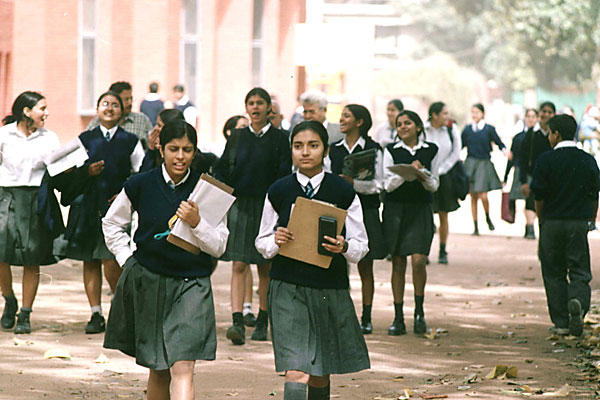 As communities around the world celebrated International Women’s Day yesterday, there were several interesting articles discussing the role of women in the world. Nicholas Kristof wrote about Three Proven Steps to Advance the World’s Women (education, micronutrients, and helping women start businesses). Another article talked about The World’s Best Countries for Women. The Christian Science Monitor discussed Gender Selection – an issue which we have often dialogued about here on TLH. The article talks about the repercussions of sex selective abortion – specifically, the gender imbalance leading to fewer women available to be wives.
As communities around the world celebrated International Women’s Day yesterday, there were several interesting articles discussing the role of women in the world. Nicholas Kristof wrote about Three Proven Steps to Advance the World’s Women (education, micronutrients, and helping women start businesses). Another article talked about The World’s Best Countries for Women. The Christian Science Monitor discussed Gender Selection – an issue which we have often dialogued about here on TLH. The article talks about the repercussions of sex selective abortion – specifically, the gender imbalance leading to fewer women available to be wives.
Villagers here say that the dearth of females has already had a direct effect on dowry customs: Dowries are getting smaller or disappearing altogether; instead, the onus is increasingly on young men to provide well for their future brides… Baljeet Singh, a 37-year-old truck driver, says he began to despair of finding a local wife once he turned 26. Men in this village, where most are farmers, consider it ideal to wed between 20 and 25. “I’m a van driver, I don’t have many prospects, and it seems that you have to have a very good job to get a bride these days,” he says. So last year, Mr Singh used his life savings to marry a 16-year-old Muslim girl from Assam; though village rumors have it that Sonu Khutum is an illegal immigrant from Bangladesh. She is happy to be living in a predominantly Hindu village, she says, joggling the couple’s 7-month-old baby girl on her hip. But lonely bachelors’ new quick fix, buying brides from impoverished parts of India, seems likely to do little to enhance the status of women. [link]
 Of some note to Sikhs, members of the Bachchan actor family has caught the fancy of the Indian press in relation to our faith. It started with Amitabh Bachan’s blog post, where he wrote:
Of some note to Sikhs, members of the Bachchan actor family has caught the fancy of the Indian press in relation to our faith. It started with Amitabh Bachan’s blog post, where he wrote:
Abhishek shoots Bingo in the Holy City of Amritsar and his sister Shweta joins him to pay homage and prayer at the Harmandir Saheb. I wish I could do the same, but am unable to. Soon however I shall find the time. Or as they say in such situations, when the time comes He will call you and providence shall make the right moves and ways to permit us to do so. The Sikh blood in me beckons and I must honor it. It is rather strange, but in the last few months, my attraction and interest towards my Sikh links, attain some prominence and I feel drawn towards it. Two lockets of Guru Nanak ji, Sacche Padsha, are constant on my neck – one a gift from Guddi Behenji my cousin, daughter of my Mother’s elder sister Gobind Masi ji and the other I found as a gift to me that was lying on my desk unnoticed. Now they both adorn my neck. Raj Kanwar, one of Abhishek’s early directors had presented me with a photograph of all the Guru ji’s and they now are with me at my place of worship. I seek blessings from them each morning – ‘Sat Naam Wahe Guru’ , I recite, as I touch their images and a strange sense of fulfillment and strength consumes me.[link]
Now many Indian press website running headlines – “Big B Feels Drawn Towards Sikhism” and the like. New headlines are now coming out about his son – Abhishek – performing seva at Darbar Sahib.
While many Indians and even some Sikhs are impressed, I can’t help but have little care. Maybe it is because of long allegations in the community that have never been dispelled.
This week, the Wall Street Journal highlighted India’s decision to change some of its agricultural policies, in response to its 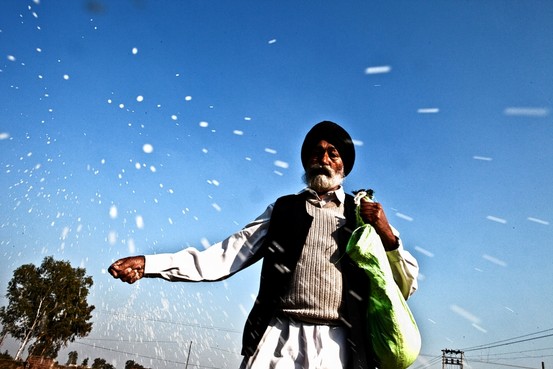 post-Green Revolution crisis. (Hat tip: Bandana)
post-Green Revolution crisis. (Hat tip: Bandana)
In the 1970s, India dramatically increased food production, finally allowing this giant country to feed itself. But government efforts to continue that miracle by encouraging farmers to use fertilizers have backfired, forcing the country to expand its reliance on imported food. [WSJ]
Kamaljit Singh, a 55 year old from Marauli Kalan in Punjab, explained:
He says farmers feel stuck. “The soil health is deteriorating, but we don’t know how to make it better,” he says. “As the fertility of the soil is declining, more fertilizer is required.” [WSJ]
Behind the worsening health of the soil is India’s agricultural policy. In it’s effort to boost food production, win farmer votes and encourage the domestic fertilizer industry, the government increased its subsidy of urea over the years, and now pays about half of the domestic industry’s cost of production.
Over the past few months, we have come across various articles in the media depicting the state of affairs for students of Indian origin living in Australia. Attacks against Indians (allegedly racially motivated) and, what was perceived to be, a poor response by the police and leaders sparked protests in both Australia and India. Widespread media coverage in India has been especially critical of Australia’s handling of this violence. On the other hand, however, the Indian media’s coverage has been likened to hysteria by many in Australia. Many are saying that the Indian media has done more harm than good in their coverage of the events, and in doing so, have shadowed the real problems faced by students in Australia.
So what exactly is going on? A few days ago we received an email from a TLH reader in Australia who wanted to share his perspective on the situation:
I am a year 12 student from Australia about to go into university and I would just like to express some opnions which I hope you could take to the readers of The Langer Hall. Recently there has been much uproar in the Indian media and community about these so-called racist attacks on Indian students in Australia. It really pained me to hear how such events could occur in what has developed to be one of the most multicultural countries in the world. Having just finished school I can say that the range of cultures and backgrounds which I have been exposed to…has been awesome. In my fifteen years as a turbaned boy I have not once felt like this country holds any form of racist ideas against me. My father has been a turbaned bus driver, and now a train driver for many years and he expresses similar ideas to me… Just recently the news begins to appear through investigations by Australian Police that many of these attacks on Indian students..were in fact carried out by other Indian students. I am not saying that all the attacks that occur…are by Indians…but i am raising the point that Australia is not as bad as many people make it seem. I see in Indian newspapers everyday that there was some attack on an Indian and they request Indians to stop going to Australia. Yet not one paper made mention of the fact that it was Indian students who had been arrested for the murders. Well I suppose that is expected in India… [-KS]
Update: The SWAT team provided an update on their progress. See end of post.
The Sikh Welfare Awareness Team is a new charitable organization in the UK focused on bringing awareness to drug and alcohol abuse in our community and reducing involvement in crime by providing youth with activities and organized events to participate in. The organization’s primary goal is “to establish relationships amongst the youth and… aim to bring together the local Sikh Community and focus on projects which benefit the youth of today.” I came across information about this organization after viewing a troubling YouTube video about homeless Sikhs (since the video below has been made private by the owner, log on and you can also watch the videos on Facebook). The Sikh Welfare Awareness Team (or S.W.A.T.) is currently working to bring awareness to the growing number of Sikhs, many who are recent immigrants from Punjab and are homeless living on the streets of Southall.
In predominantly Christian countries like the U.S., Christmas has become a cultural holiday that even non-Christians celebrate to some extent. Most of us enjoy, at least, taking advantage of days off, eating lots of cakes and pies, and spending time with family and friends.
The Times of India thinks Christmas can do even more than give us a day off work… like heal the wounds caused by police brutality in Ludhiana against Sikh protesters of Ashutosh and the Divya Jyoti Jagriti Sansthan. Of course, TOI also mischaracterizes the conflict at issue as one between migrants who now feel left out of Ludhiana’s social fabric and Sikhs.
Christian organizations are planning to celebrate the festival by reaching out to the migrants, who have been feeling left out after the riots they were involved in and to Sikh protesters, who got hurt in police action.
“Christmas celebrations have the twin themes of peace and prosperity. We will be going to the areas like Dhandari, which have many migrants staying there and witnessed a lot of clashes during the riots,” said Albert Dua, president of Christian United Federation. [TOI]
TOI journalists may not have much of a grip on reality, and are probably overestimating what one holiday and a few days off can do. Still, I do hope you enjoy the holidays, however you spend them. Happy holidays!
On a remotely related note, if Santa were Punjabi….

Guest blogged by justasikh

Every so often you come across news that your mind struggles to believe is real.
Is this real? A joke? Either way, the reaction is likely as interesting as the cause.
Haagen Dazs, a prolific producer of ice cream the world over approves a new location to be opened in Delhi, India. So far, so good.
There’s an emerging middle class lusting after one another’s things like an episode of the 1960’s Mad Men. Lots of international travelers. Connaught Place. Lally Singh and his lovely motorcycle shop.
Now, we have Haagen-Dazs. It’s the unevolved Kulfi, evolved. Made how it should be, I guess?
Look what is in Delhi!
Gives new meaning to having a case of the dreadful and queasy Delhi-belly.
So, let’s see this train wreck coming from a mile away. Allow the self-annointed linguist in me to protest.
Yesterday was International Human Rights Day where people across the globe were asked to recognize and take action against the many forms of human rights abuses that take place in the world. A powerful talk on TED by Sunitha Krishnan brought insight into the grueling ground realities of sex trafficking in India- a human rights abuse that affects millions of women, their children and families. Krishnan addresses both what it looks like and the difficulties of rescuing women and their children from this $10 million industry. Krishnan says, “It’s normal to be raped by 100 men a day and abnormal to live in a shelter. It’s abnormal to get rehabilitated. It’s in that context that I rescue children. I rescue children as young as 3 years and women as old as 40 years.” Krishnan has rescued 3,200 girls.
She highlights how this modern day slavery and third largest form of organized crime affects those of all backgrounds-from middle class IS officers’ daughters to street children. You can watch the talk here (disclaimer: the talk contains graphic images and descriptions of violence).
Her work on commercial sexual exploitation is powerful because of her courageous attitude towards rescuing victims. Krishnan’s tenacious spirit coupled with her collaborative approach of bringing government, NGOs, and corporations together to fight sexual trafficking is unique. While listening to her talk, I found her organization’s approach to moving women in the commercial sex trade industry into new jobs particularly unique. An essential part of these women’s rehabilitation is to gain a new economic skill set that utilizes the power from their pain while harnessing their potential. Thus, girls are being trained as professional welders, carpenters, and mansons instead of working on computers. Often providing technical skill sets in information technology is seen as powerful form of empowerment, particularly in a place like Hyderabad-the technological capital of the world. So, “why welding and not computers?” Krishan says,
“They had an immense amount of courage without any “pardahs” inside of their bodies. They could fight in a male dominated world very easily and not feel shy about it. [By working] as carpenters and masons … as security guards and cab drivers … they are gaining confidence, restoring dignity, and building hope. “
These women excel in their careers and works for large corporations. However, the biggest obstacle they continue to face is not economics but the lack of empathy from civil society. The stigma that these women live with even after moving out of the sexual trade industry forces them to suffer in silence. Krishnan says that civil society has “Ph.D.s on victimizing a victim”. She requests that within our limited worlds, civil society needs to open their minds and hearts to accept these victims of sexual trafficking as human beings. It is an essential part of their rehabilitation as is gaining an economic skill set.
A few weeks ago we posted about the issue of women in Punjab marrying men from outside of Punjab, to only be deserted by them after marriage. The post created a colorful (although often one-sided) dialogue about the issue. While our response in the diaspora is significant and can often help initiate conversations and perhaps also change, it is the commentary by the community in Punjab which is hugely important. The video below is one such response to the issue of seeking grooms from outside of Punjab. Is the value placed on sending young Punjabi women to the UK, US and Canada higher than ensuring their happiness?
I normally only watch Bollywood, if ever, to laugh. At the acting, the ridiculous stereotypes, the loony drama.
Though when the bad acting, ridiculous stereotypes, and loony drama are played out by Sikh characters, it’s a little depressing.
A lot of people would probably say that the quality of films coming out of Bollywood is improving. And that might be true if you’re talking about cinematography, but when it comes to depth in a plot, I haven’t seen any signs of improvement. But maybe Bollywood will pleasantly surprise its critics with Rocket Singh?

Almost two years ago I blogged about an NPR story that highlighted the issue of Runaway Grooms. Today, I once again write about the same issue – this time the media terms it “Holiday Brides” – a different name telling the same story. We should be outraged that years after we first heard about this issue, we are still having the same conversation. We are told that about 20,000 women have been deserted by men in the UK, US and Canada who promise to return to India and never do. The most recent questions is then, why are Punjabi women still falling for this obvious scam?
In a dusty village in the Jagraon district of Punjab, northern India, 35-year-old Suman (which is not her real name), lives with her widowed mother in a small room in a crumbling building. Four years ago, the secondary school teacher married a British man in a wedding arranged by relatives. Shortly after the ceremony, her husband, who is in his 50s, left for London with the promise he would send for her. At first all appeared to go well. “He would visit two to three times a year. “Whenever he came to India, we had a good time,” she said. However, on one visit he claimed her application for a spousal visa to the UK had been refused. It was like being a prostitute you take along and have a good time with and then leave behind ‘Suman’, 35 “He told me he had applied for an appeal. “But he has never shown me a copy of that appeal. He’s never shown me any documents.” The visits and calls ended, and for the past six months Suman has had no contact with her husband. “In hindsight, it was like being a prostitute you take along and have a good time with and then leave behind. [link]
Two great events are happening this Saturday: in San Francisco- “Women in 1984”; in New York- Lahir.
If you’re anywhere near either of these 2 cities, you better be there, or you’ll regret missing out!
Women in 1984
Dr. Cynthia Mahmood’s work deals directly with the issue of militancy and she will discuss the violence in Punjab from the macro lens of India as a democracy.Navkiran Kaur Khalra will speak of her own experiences as the daughter of S. Jaswant Singh Khalra and the heritage of his vision. The Khalra family’s narratives is inherently linked to the states backlash against movements desiring human rights and autonomy.Jasmine Kaur Marwaha, human rights lawyer for Ensaaf, will be discussing the the right to reparations for victims of the November 1984 pogroms, as well as victims of the Punjab counterinsurgency, from a gendered perspective.
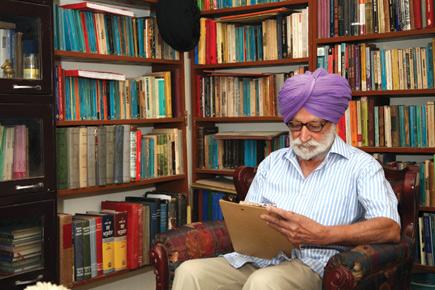 To be or not to be? Well, apparently for Surjit Singh Hans – it is to be. Hans, an academia based in Mohali, is undergoing the feat of translating Shakespeare’s work into Punjabi. Hans retired from Guru Nanak Dev University in Amritsar, where he had once been head of the department of history having done extensive work on Sikh literary sources and in particular the Janamsakhis. He has been working on this task for the past sixteen years.
To be or not to be? Well, apparently for Surjit Singh Hans – it is to be. Hans, an academia based in Mohali, is undergoing the feat of translating Shakespeare’s work into Punjabi. Hans retired from Guru Nanak Dev University in Amritsar, where he had once been head of the department of history having done extensive work on Sikh literary sources and in particular the Janamsakhis. He has been working on this task for the past sixteen years.
The translation follows the original line by line—you want to locate line 20, Act II, scene (i), in the Arden edition of Hamlet, all you have to do is look at the corresponding line in the translation. The iambic pentameter of Shakespeare has given way to the chaupai in Punjabi, but what matters is that these lines are almost as resonant in Punjabi as they are in the original English. They work well when read aloud, as Shakespeare is meant to be, and there is little here that a Punjabi can’t take to heart. Indeed, the heavy-headed revelry ‘takes from our achievements, though performed at height’. [link]
As for how well Shakespeare’s work translates into Punjabi, Hans suggests that King John could parallel the story of Aurangzeb and Two Noble Kinsmen could be a scene out of a Punjabi village (two men, one girl – hardly promising).
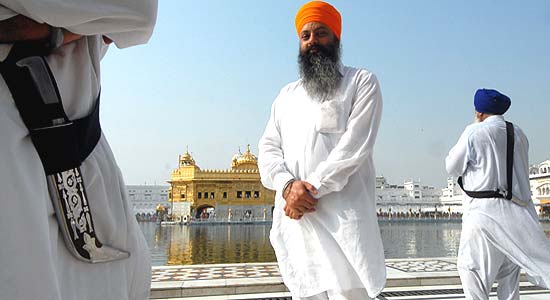 History often remembers transformative figures through the public images they become. Glimpses and insights into their private lives are rare. So an interview with Sant Jarnail Singh Bhindranwale’s son is a rare treat.
History often remembers transformative figures through the public images they become. Glimpses and insights into their private lives are rare. So an interview with Sant Jarnail Singh Bhindranwale’s son is a rare treat.
Ishar was just five years old when Jarnail Singh Brar was anointed the 12th jathedar of the Damdami Taksal. He left home and adopted the “Bhindranwale” after the village of Bhindran Kalan where the sect was originally located. “After that we only saw our father at his satsangs,” Ishar said. “But we were well looked after.” Did he miss his father? “From the family point of view I was sad, but from a Sikh point of view I was very happy.” The Jalandhar editor waved a laminated family photograph at me—a very young Ishar Singh with his eyes shut, an oddly self-conscious Sant Bhindranwale, his younger son Inderjit, his wife Pritam Kaur. [Outook India]
Ishar is the oldest of Bhindranwale’s two sons, and now a land realtor near Amritsar. He was 12 yrs. old during Operation Bluestar, studying Gurbani under Mahant Jagir Singh at Akhara village near Jagraon. [OI]


